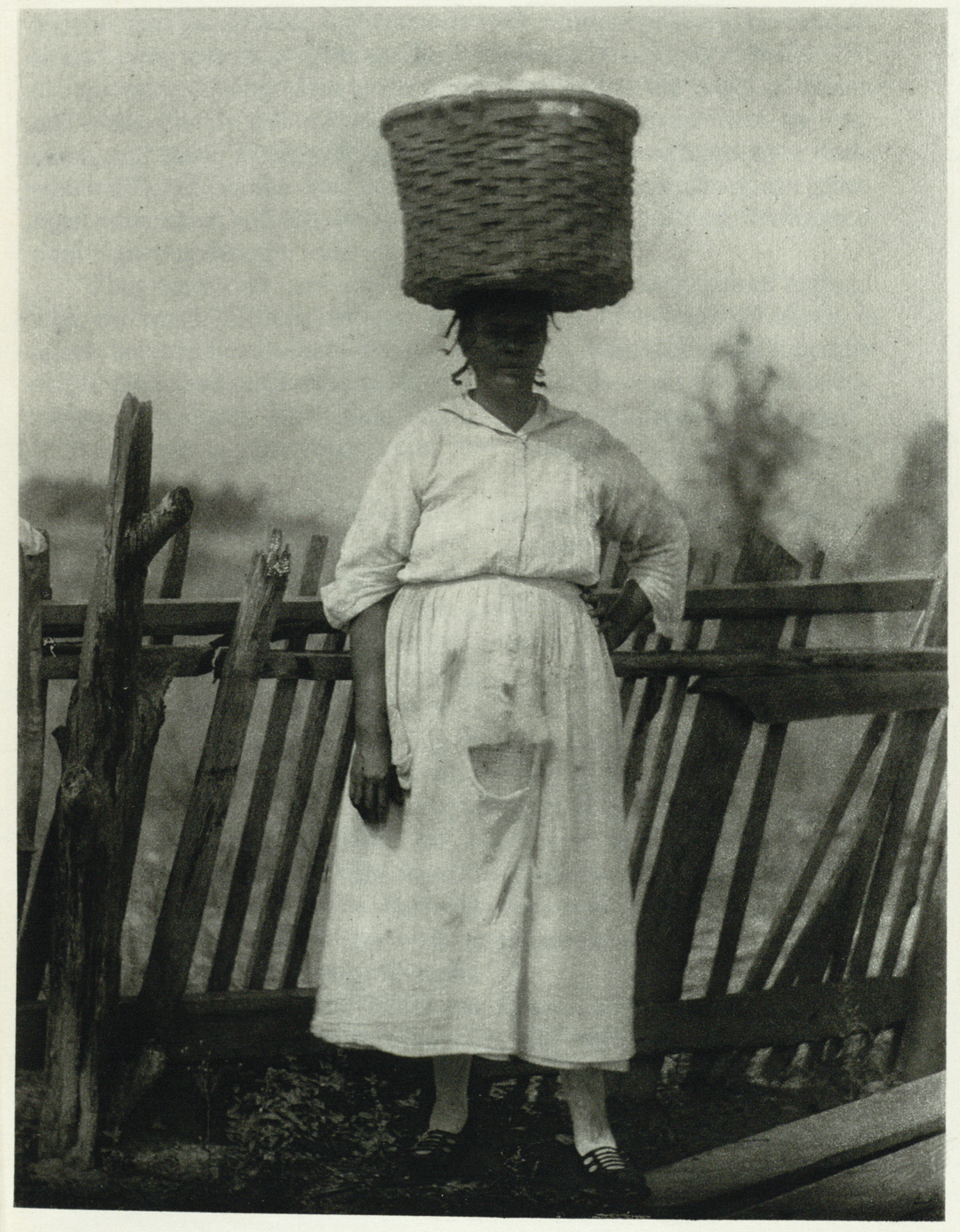
Doris Ulmann, Woman with Basket of Cotton on Head, Probably South Carolina, ca. 1929–31. Photogravure for Roll, Jordan, Roll, approx. 8 x 6 inches. Photographs and Prints Division, Schomburg Center for Research in Black Culture, New York Public Library, Astor, Lenox and Tilden Foundations.
At the turn of the 20th century, the Gullah and Appalachian communities that made the Southeast so distinct were beginning to disappear. Photographer Doris Ulmann traveled across the region to preserve these cultures, capturing thousands of portraits before Dorothea Lange or Walker Evans ever set out.
Despite her groundbreaking documentary photography, the affluent Ulmann was considered an eccentric who never gained the reputation of her contemporaries. From August through November, the Georgia Museum of Art is hosting the first complete retrospective of Ulmann’s work, Vernacular Modernism: The Photography of Doris Ulmann.

Doris Ulmann, Lucy Lakes Piecing Together Corn Shucks for a Chair Seat, Berea, KY, ca. 1933. Posthumous gelatin silver print, printed by Samuel Lifshey, ca. 1934–37, 8 x 6 inches. Used with permission of the Doris Ulmann Foundation. Berea College Art Collection, Bequest of Doris Ulmann, Accession No.150.14D.0189.

Doris Ulmann, Potter, Meaders Potters, Cleveland, GA, ca. 1933. Posthumous gelatin silver print, printed by Samuel Lifshey, ca. 1934–37, 8 x 6 inches. Berea College Art Collection, Bequest of Doris Ulmann, Accession No. 150.14D.4509.
The exhibition features 115 portraits over Ulmann’s career, from abstract images of hands she explored as a student to portraits of famous figures like Albert Einstein to her travel photography in lowcountry plantations, Appalachian Mountain communities, and other homesteads throughout the Southeast. “She wasn’t coming in as a social reformer, but saying, ‘Here’s a community of interest that might be disappearing that I will record for posterity,’” says Sarah Kate Gillespie, GMOA’s curator of American art. “These are incredibly nuanced, sensitive portraits.”
Throughout her 16-year career, Ulmann’s style evolved from artily abstract pictorialism to more modern documentary, but throughout, she maintained a strong eye for contrast that makes her work striking and dynamic today.
See Ulmann’s photos up close
Vernacular Modernism: The Photography of Doris Ulmann runs from August 18 to November 18 at the Georgia Museum of Art in Athens. Free admission. georgiamuseum.org
This article appears in our August 2018 issue.














